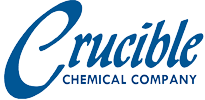Water treatment is essential for ensuring safe and clean water for human consumption and protecting public health. Its significance extends across diverse industries, such as manufacturing and healthcare, where treated water is indispensable for processes, products, and services. Effective water purification solutions safeguard natural resources, improve industrial efficiency, and promote sustainable development.
This article explores the technologies and methods used to provide clean and safe water while meeting strict environmental regulations. We will also discuss water management challenges and innovations enhancing public health and operational efficiency.
Technologies and Processes Utilized in Water Treatment
Water purification systems use various techniques and methods to ensure clean, safe water and meet environmental standards. Here are some key technologies and processes:
1. Coagulation and Flocculation
This process involves adding chemicals to water to neutralize particles and contaminants, causing them to clump together. Gentle mixing forms larger particles called flocs, which makes their removal easier. This reduces turbidity and particulate content, facilitating subsequent treatment stages.
2. Sedimentation
Following coagulation and flocculation, water sits in a sedimentation basin, where the heavy flocs settle to the bottom. This process removes a significant amount of suspended solids, which is crucial for reducing the load on downstream filtration processes.
3. Filtration
Filtration passes water through various media to remove smaller particles that did not settle during sedimentation. Sand filtration uses layers of sand, gravel, and charcoal, while membrane techniques like microfiltration and reverse osmosis remove contaminants on a molecular level. These methods are essential for trapping and eliminating pathogens and organic compounds.
4. Disinfection
Disinfection ensures the elimination of pathogenic microorganisms from water. Chlorination, ozonation, and UV radiation are common methods, each with specific advantages. These processes are selected based on the water’s characteristics to effectively kill bacteria, viruses, and other pathogens.
5. Advanced Oxidation Processes (AOPs)
AOPs use combinations of oxidants and catalysts to produce highly reactive hydroxyl radicals. These radicals effectively break down organic contaminants and disinfect water. AOPs are particularly useful for degrading complex organic molecules resistant to conventional treatment.
6. Biological Treatment
This treatment uses microorganisms to remove organic matter from wastewater. In the activated sludge process, microorganisms break down organic pollutants, converting them into biomass and carbon dioxide. Biofiltration involves passing water through a biological filter where microorganisms degrade contaminants, efficiently reducing organic load and nutrient levels.
7. Chemical Treatment
Chemical treatment adds chemicals to water for targeted goals, such as pH adjustment or chemical precipitation. These methods form insoluble precipitates that are removed via sedimentation or filtration. They are vital for eliminating dissolved metals, phosphates, and challenging contaminants not easily managed by physical or biological methods.
8. Desalination
Desalination removes salts and impurities from seawater or brackish water to produce fresh water. Reverse osmosis uses a semi-permeable membrane to separate salts, allowing only clean water to pass through. Distillation heats water to create steam, which is condensed back into liquid, leaving impurities behind. This makes desalination crucial in areas with limited freshwater resources.
Challenges and Innovations in Water Management
Technological advancements have enabled the improvement of water treatment systems to support public health and improve business operations. They also address the following challenges:
Aging Infrastructure and Modernization
Aging infrastructure leads to inefficiencies, water losses, and contamination risks. Innovations like smart water management systems with artificial intelligence (AI) and Internet of Things (IoT) integration enable real-time monitoring and predictive maintenance. Upgrading old infrastructure with these technologies can extend lifespan and improve operational efficiency.
Contaminant Diversity and Advanced Filtration
Emerging contaminants like pharmaceuticals, personal care products, and microplastics challenge traditional methods. Advanced filtration technologies such as nanofiltration, forward osmosis, and graphene-based filters offer more efficient removal of diverse pollutants. These innovations provide effective treatment solutions for new contaminants.
Regulatory Compliance and Smart Solutions
Strict environmental regulations require continuous monitoring and adherence to quality standards, which can be resource intensive. Smart water management systems enhance compliance through real-time data collection and analysis, ensuring water filtration facilities meet standards efficiently.
Resource Scarcity and Water Reuse
Water scarcity is a growing concern, necessitating efficient use of available resources. Innovations in water reuse and recycling allow safe treatment and repurposing of wastewater. This reduces the demand for freshwater sources and promotes sustainable water management practices.
Partner With Crucible Chemical Company as a Supplier for Defoamer and Antifoam Needs
At Crucible Chemical Company, we provide innovative and effective water treatment solutions tailored to your needs. With decades of experience and a steadfast commitment to excellence, our advanced chemical treatments ensure safe and efficient water management across various industries.
Contact us today and discover how our cutting-edge technologies can elevate your processes and support your industry’s requirements.

